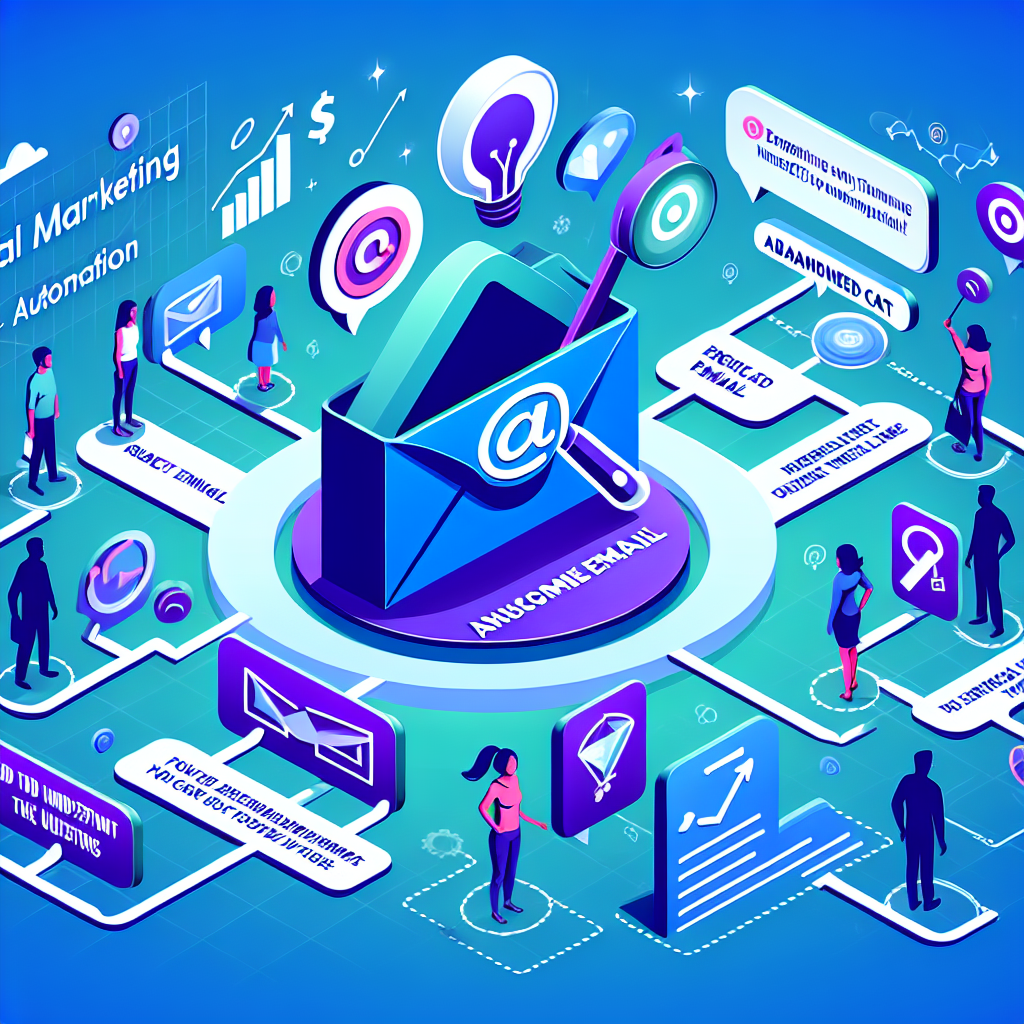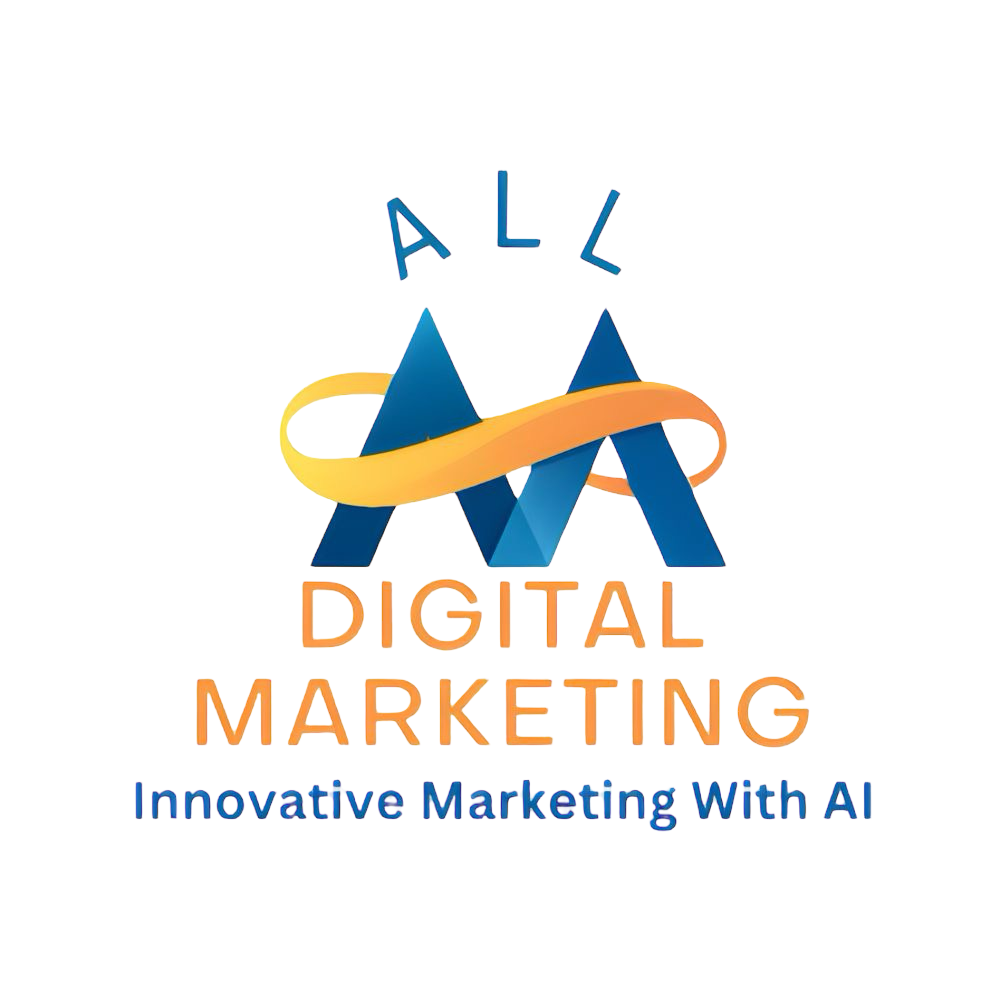Are you pouring time and money into lead generation but struggling to see real results? Did you know companies that master lead gen can achieve over 133% more revenue than their competitors? If you’re frustrated by lackluster leads, confusing tools, and marketing efforts that don’t convert, you’re not alone. But here’s the good news—every business can fix lead generation with the right strategies and tools. In this guide, you’ll learn why most businesses fail at lead gen, how to turn the tide, and actionable steps to transform prospects into paying customers. Let’s dive in! Surprising Lead Generation Statistics: Why Most Businesses Fail at Lead Gen "Companies that excel at lead generation have 133% more revenue potential than those that do not." Over 60% of businesses say their lead generation efforts are ineffective or inconsistent. Only 27% of leads are considered truly qualified for follow-up by the sales team. 90% of marketers say generating quality leads is their biggest challenge. Landing page conversion rates average a mere 2.35% across industries. Marketing and sales teams are often misaligned on lead quality metrics. It’s clear: lead generation is one of the most misunderstood and misapplied steps in the sales and marketing funnel. Many businesses focus on quantity—trying to accumulate as many leads as possible—rather than quality, which strains both the marketing team and the sales team and leads to wasted resources. Even with a dedicated landing page and a robust marketing automation system, organizations often struggle to convert their target audience into actual paying customers. These surprising statistics highlight the need for a more strategic, data-driven approach to lead gen . Lead Generation Fundamentals: Understanding the Core Principles of Lead Gen What do you mean by lead generation? Lead generation is the process of attracting and converting strangers or prospects into someone who has indicated interest in your company’s product or service. A quality lead provides you with contact information —such as an email address or phone number—which signals a potential customer’s readiness to learn more or engage further. Using a generation tool , businesses can automate the capture and management of these leads, ensuring that the sales team gets the most relevant and promising opportunities. The key is not just to find any lead, but to secure a qualified lead —someone who matches your ideal customer profile and is most likely to convert into a paying customer. This is where understanding your target audience and crafting offers aligned with their needs is critical. What is the lead generation process? The lead generation process involves guiding potential customers through the journey—from their initial awareness of your brand to the point where they’re ready to talk to your sales team or make a purchase. This journey starts with attracting your target audience through content marketing, social media, and SEO, capturing their details via landing pages and forms, and nurturing these leads through email marketing and targeted outreach. Key steps in the process include defining your target audience , creating valuable content, optimizing landing pages with clear calls to action, scoring leads to determine quality, and passing qualified leads to the sales team. The role of marketing automation is to streamline these steps, ensuring that leads are nurtured and moved efficiently through the funnel, and no quality leads slip through the cracks. Qualified lead: A prospect who matches your target audience and has shown intent to purchase. Sales team: The group responsible for converting leads into customers. Landing page: A dedicated web page designed to capture lead information. Lead scoring: The process of ranking leads based on readiness to buy. Generation tool: Software used to capture, track, and manage leads. Content marketing: Creating valuable content to attract and engage prospects. Email marketing: Sending targeted messages to nurture and convert leads. Marketing automation: Tech that automates repetitive lead management tasks. Psychology of Lead Generation: Why Your Audience Responds (or Not) Consumer decision triggers in lead generation Underlying every successful lead generation campaign is an understanding of what makes a potential customer say “yes.” Consumer decision triggers—such as urgency, relevance, trust, and perceived authority—determine whether a prospect is ready to provide their contact information or take the next step. Lead gen works best when you tap into your target audience’s pain points and desires. People are more likely to engage with your brand if your content, landing page, and messaging clearly demonstrate immediate value and solve actual problems. Including strong, relevant calls to action and clear benefits increases your conversion rate and drives more quality leads for your sales team. The role of trust and social proof in lead gen Trust is non-negotiable in lead generation . Prospects need assurance that you’re a legitimate and reliable provider before they’ll give personal details or consider your products or services. Demonstrating authority via testimonials, case studies, and third-party endorsements provides the social proof needed to tip the balance in your favor. Highlighting customer testimonials and industry certifications on your landing page builds credibility, while honest reviews and transparent communication create an emotional bridge with your ideal customer. Trust elements—like privacy assurances and visible contact info—greatly impact lead quality and conversion rates. Trust: Reassure leads with privacy policies and visible support. Authority: Showcase expertise through awards, certifications, and partnerships. Urgency: Use limited-time offers to prompt faster action. Reciprocity: Offer valuable free resources in exchange for info. Relevance: Personalize content and messaging for your specific target audience. Effective Lead Generation Strategies That Deliver Quality Leads Content Marketing and SEO for Lead Generation Content marketing and SEO remain powerhouse strategies for attracting the right leads at scale. By publishing helpful blog posts, guides, and case studies around your main keyword and related topics, you draw in a highly-targeted audience that’s actively searching for solutions. Well-optimized content increases your visibility in search engine results and establishes authority. Place strategic calls to action within your content to direct readers to optimized landing pages or gated assets —like eBooks, templates, or free trials. This not only helps to generate leads, it kickstarts lead nurturing right away. Combine this with an SEO strategy focused on the keywords your ideal customer is using, and you’ll consistently attract more quality leads . Social Media Campaigns as Generation Tools Social media has evolved into one of the most dynamic generation tools for capturing leads and driving engagement. Platforms like LinkedIn, Facebook, and Instagram allow you to reach specific segments of your audience with tailored messaging, visuals, and offers. Successful social media lead gen involves a mix of organic content, sponsored ads, and interactive campaigns. Using retargeting tactics, you can follow up with users who’ve engaged with your posts or visited your website but haven’t converted yet—helping move potential customers further down the sales funnel. Landing Pages That Convert A winning landing page is purpose-built for conversion—featuring a single, persuasive call to action, benefit-focused copy, and a frictionless form to capture contact information . The fewer the distractions, the higher the conversion rate. Use clear headlines, bullet points, and trust badges to guide visitors toward action. Don’t be afraid to A/B test different layouts, colors, and offers to see what works best for your target audience . Small tweaks can lead to major improvements in how many quality leads your sales team receives. Email Marketing and Automated Nurturing Email marketing allows you to nurture leads over time, delivering personalized content, educational resources, and exclusive offers. Automated workflows can segment your audience, triggering follow-ups based on user behavior and engagement. This ensures no lead goes cold and that your marketing team consistently supports the sales team's pipeline. Leverage marketing automation to send drip campaigns, retargeting messages, and reminders to download assets or book calls. The result is a steady stream of informed, engaged, and sales-ready leads. Offer content upgrades like checklists and templates. Optimize forms for quick and easy info-gathering. Set up retargeting campaigns for website visitors. Personalize outreach for different buyer personas. Use gated assets to incentivize high-value contact info exchange. Choosing the Right Lead Generation Tools for Your Business Popular lead generation tools and their features Today’s most effective lead generation tools combine automation, analytics, and seamless integration with your sales funnel. Platforms like HubSpot, Marketo, LinkedIn Lead Gen, and Leadpages offer features such as customizable forms, advanced analytics dashboards, lead scoring, and direct integrations to your CRM or email marketing systems. Choosing the right generation tool depends on your goals, resources, and business model. Some tools excel in B2B lead gen ; others are tailored for B2C campaigns with social media-heavy strategies. The ideal solution saves your team time, delivers relevant data, and helps you convert more quality leads every month. Comparison of Top Lead Generation Tools Tool Main Features Best For Price Range HubSpot All-in-one CRM, marketing automation, lead scoring, analytics B2B, inbound marketing, scaling teams Free–$3,200+/mo Marketo Advanced marketing automation, personalization, analytics Enterprise, complex sales cycles $895+/mo LinkedIn Lead Gen Lead capture via LinkedIn ads and forms, integrations B2B, professional services, recruiters $50+/day Leadpages Landing page builder, A/B testing, pop-ups B2C, small businesses, quick launches $37–$99/mo Integrating and optimizing lead generation software Integrating your lead generation tool with your CRM, email marketing solution, and analytics dashboard creates a closed-loop system where leads are captured, tracked, nurtured, and measured efficiently. This helps align your marketing team and sales team, ensuring no potential customer is left behind. Optimizing software workflows—from scoring and routing leads to automating email follow-ups—removes manual bottlenecks and improves your sales team’s productivity. Set up customized notifications, assign leads based on engagement or demographics, and track every touchpoint to boost your lead quality and conversion rate. Automation: Reduces manual effort, speeds up response times. Analytics: Measures lead source effectiveness and conversion rates. Integrations: Seamlessly connect to CRM, email, and other business apps. Cost: Assess ROI based on features versus budget. Scalability: Ensure your tool grows with your business. Lead Scoring to Identify the Highest Quality Leads How lead scoring works in modern lead generation Lead scoring is the process of measuring and ranking leads based on their actions, profile, and likelihood to convert into paying customers . Modern lead scoring uses a combination of demographic data (like company size, job title) and behavioral signals (such as website visits, content downloads, or webinar attendance). Automation plays a big role. As soon as a new lead enters your system, the lead generation tool assigns scores based on preset criteria. High-scoring leads are flagged for immediate follow-up by the sales team, while lower scores can trigger additional nurturing campaigns. This ensures that the sales funnel remains focused on the most promising prospects—maximizing revenue and efficiency. Customizing lead scoring models for your business No two businesses have identical ideal customers —which is why your lead scoring model should reflect your unique needs. Start by identifying the key attributes of your highest-converting leads: which demographics, behaviors, and intent signals consistently predict a high-value customer? Assign weight to each attribute—such as engagement with content marketing, frequency of website visits, or interaction with social media campaigns. Update your scoring model regularly, using historical analytics and sales outcomes for guidance. This dynamic approach helps your sales team focus on qualified leads with the highest revenue potential. Engagement: Opens emails, downloads resources, joins webinars. Demographics: Fits your target audience (role, industry, company size). Purchase intent: Requests demos, pricing, or speaks with reps. Online behavior: Visits key landing pages or pricing sections. Case Studies: Lead Gen Success Stories Example: How content marketing tripled quality leads One SaaS company faced diminishing returns from paid ads and cold outreach. After investing in content marketing (detailed guides, webinars, SEO-driven blog posts), they saw a 3x increase in quality leads within six months. The secret? Focusing on real pain points, sharing actionable insights, and offering valuable resources in exchange for contact information. "Immediately after optimizing our lead generation process, our sales team saw a 70% uptick in conversion rates." – CMO of B2B startup What is an example of lead generation? A typical example of lead generation is offering an industry-specific eBook through your website. Interested visitors enter their contact info on a landing page to download the resource, instantly becoming new leads for your sales and marketing teams to nurture. Other examples include webinar signups, free trial offers, or newsletter opt-ins. E-commerce: Special discount codes for first-time signups boost subscriber and lead gen lists. SaaS: Free trials that require business email capture highly-engaged, qualified leads . Professional Services: Free consultations or strategy sessions to attract potential customers. Lead Generation Tactics for Sales and Marketing Teams Aligning sales team and marketing team efforts When the sales team and marketing team work together, lead generation improves dramatically. Set clear definitions of what a qualified lead is and align messaging, handoff processes, and reporting metrics. This ensures the sales team wastes less time chasing uninterested prospects and the marketing team hones in on producing the right kind of leads. Regular joint meetings, feedback loops, and shared dashboards can bridge the divide between teams. Both must agree on the definition of a quality lead and the criteria for passing leads along the sales funnel, reducing friction and maximizing revenue opportunities. Leveraging content marketing, social media, and email marketing Highly successful lead gen programs leverage a blend of content marketing , social media campaigns, and email marketing nurture sequences. Content attracts and educates the right leads, social media amplifies reach and interaction, and targeted emails provide ongoing value that guides leads towards a sale. Use data from each channel to refine your messaging, spot successful content themes, and double down on what works best for your target audience . The synergy between marketing channels ensures your business stays top-of-mind with leads long after the first touchpoint. How to Coordinate Sales Team and Marketing Team for Lead Generation How to Generate Leads for Different Industries Using Lead Generation Adapting the lead generation process to industry requirements Different industries require unique lead generation approaches. For instance, SaaS companies often focus on offering free trials, while healthcare providers prioritize webinars and detailed guides for educational engagement. B2C companies lean into social media contests, influencer partnerships, and quick opt-ins. Understand the specific buying journey of your target audience . Tailor your landing page design, offer, and follow-up to fit their needs. Industry regulations, decision timelines, and customer expectations will shape which channels and strategies drive the most quality leads to your pipeline. Search engine tactics and specialized lead gen campaigns Invest in search engine marketing—SEO and paid ads—to ensure your offers appear where your ideal customers are searching. Specialized campaigns may focus on long-tail keywords, local SEO for professional services, or Google Ads for real-time lead capture. Monitor metrics for each campaign type and industry. Adjust your strategy to focus on the best-performing platforms and content, keeping your generation process agile and effective. SaaS: Heavy focus on demos, gated assets, and nurturing sequences. Healthcare: Educational webinars, high-trust landing pages, compliance-first messaging. B2C: Contests, limited-time offers, and social proof-rich lead gen forms. Professional Services: Strategy sessions, transparent pricing, and content upgrades. Lead Generation Metrics: How to Measure, Analyze, and Optimize KPIs that define lead generation success Tracking the right lead generation metrics is essential to improvement. The most important KPIs include cost per lead , conversion rate , lead quality score, and customer acquisition cost. These metrics let you evaluate which strategies and tools actually generate leads that become paying customers. Key Metrics for Lead Generation Metric Description How to Optimize Cost per Lead Total spend divided by number of captured leads Refine targeting, improve landing pages, optimize ad spend Conversion Rate Percentage of visitors who become leads A/B test forms, calls to action, and copy Lead Quality Score Scoring based on engagement, profile, intent Update lead scoring models and automation triggers Customer Acquisition Cost Cost to turn a lead into a paying customer Streamline lead handoff, nurture sequences Iterative improvement in your lead generation process Optimization is a continuous cycle: measure results, analyze performance, and iterate your tactics. Run regular A/B tests on your landing pages, forms, and email campaigns, then use analytics to surface what moves the needle. This keeps your generation process fresh and competitive. Invest in measurement tools that track the full customer journey—from the first click to final sale—and report on every touchpoint along the way. The more data-driven your lead gen strategy, the more high-quality leads you’ll consistently generate. Google Analytics: Monitors site traffic and conversion sources. CRM analytics: Tracks leads through every stage of the sales funnel. A/B testing software: Compares different content, design, or offers for optimal results. Common Lead Generation Challenges and How to Solve Them Is lead generation a hard job? Lead generation is challenging but not impossible. It demands strategy, creativity, and constant refinement. Between keeping up with new tools, aligning marketing and sales, and adapting to changing buyer behaviors, many businesses find it overwhelming. However, with the right generation tool and guidance, anyone can succeed. The biggest difficulty often lies in maintaining lead quality, as capturing a large number of leads doesn’t guarantee more paying customers. Focus on targeting, using better content, and optimizing forms to improve both quantity and quality of new leads. Overcoming barriers to generating quality leads Common hurdles include outdated or poorly optimized lead capture forms , limited budgets, and misalignment between the sales team and marketing team regarding lead quality. The solution? Audit your forms, refine your target audience , and focus resources on channels that have already proven successful at turning leads into revenue. Regular communication and shared goals between sales teams and marketing mitigate these issues. Using advanced marketing automation and analytics, you can spot issues early and adjust quickly. A continuous improvement approach is your path to consistent and reliable lead gen . Poorly optimized forms may deter signups—keep fields minimal, and highlight value early. Budget restrictions? Double-down on top-performing channels and retarget engaged users. Misaligned teams? Conduct regular joint workshops to align strategies and definitions. Maximize Conversion: Turning Quality Leads Into Paying Customers Seamless hand-off from marketing to sales The transfer of qualified leads from the marketing team to the sales team is a critical moment in the lead generation process . Standardize the criteria and timing for hand-offs, using lead scoring to prioritize the warmest prospects. This ensures your sales team acts quickly and contextually, improving the likelihood of converting leads into paying customers. Leverage CRM notifications and integrated communication tools to enable fast follow-ups—ensuring leads don’t fall through the cracks and every opportunity for conversion is maximized. Nurturing strategies post-lead generation Nurturing doesn’t stop after the hand-off. Use personalized email marketing, product demos, and one-on-one consultations to build trust and demonstrate ongoing value. Consider targeted remarketing ads for leads who are close to a purchase, reinforcing your message and prompting action. "The secret to lead generation is not just in getting leads, but in converting them through meaningful connection and follow-through." Ultimately, consistent nurturing and thoughtful follow-up move leads down the funnel, resulting in loyal, long-term customers for your business. The Future of Lead Generation: Trends to Watch AI, automation, and the evolving generation process AI and automation are transforming lead generation . From predictive lead scoring models to chatbots that instantly engage visitors, these technologies eliminate manual guesswork and provide more personalized experiences for every lead. Tools equipped with machine learning adapt in real-time and score leads based on evolving behavior and intent. Automated workflows nurture leads at scale, freeing your sales team to close more qualified, high-value prospects. Omni-channel lead generation and customer journey mapping Today’s generation process happens across email, search engines, social media, live chat, and more. Mapping your customer’s full journey enables you to meet them on their preferred channels and provide a seamless experience—from first touch to conversion. Chatbots: Provide instant engagement and qualification on your site. Predictive lead scoring: Uses historical and real-time data to identify the best prospects. Conversational marketing: Real-time, personalized conversations boost conversions. Essential FAQs About Lead Generation for Business Success What is the method of lead generation? Common lead generation methods include content marketing, SEO, PPC ads, social media campaigns, email marketing, and networking events. Most businesses use a combination of inbound (attracting leads) and outbound (direct outreach) tactics tailored to their target audience and goals for generating quality leads. What is a qualified lead in lead generation? A qualified lead is someone who meets your business’s ideal customer criteria and shows intent to purchase your products or services. Factors include demographic fit, level of engagement, specific actions taken, and expressed interest in your offerings. How do I measure lead generation ROI? To measure ROI, track the total cost of your lead generation activities against revenue generated from converted leads. Key metrics include cost per lead, customer acquisition cost, and conversion rates—all captured in your CRM or analytics platform. Which generation tools deliver the best quality leads? Tools like HubSpot, Marketo, LinkedIn Lead Gen, and Leadpages consistently deliver high lead quality thanks to their automation, robust analytics, and integration features. Your choice depends on your industry needs and scaling requirements. Quickfire Lead Generation Checklist: Steps for Immediate Results Define your target audience Audit existing lead generation tools and landing pages Upgrade CTAs for conversions Integrate content marketing and social media strategies Implement lead scoring and nurturing workflows Measure, iterate, and scale Recap and Your Path to Lead Generation Excellence Understand core lead gen principles Use the right tools and strategies Align marketing and sales teams Continuously optimize for more quality leads "Lead generation is a marathon, not a sprint. Mastery comes through consistency, evaluation, and adaptation." Ready to Fix Your Lead Generation? Let Us Turbocharge Your Quality Leads Now Don’t settle for “just okay” leads. Call us at 207-710-1449 for all your marketing needs. Let us get your business more visibility and higher-quality leads!

 Add Row
Add Row  Add
Add 








Write A Comment